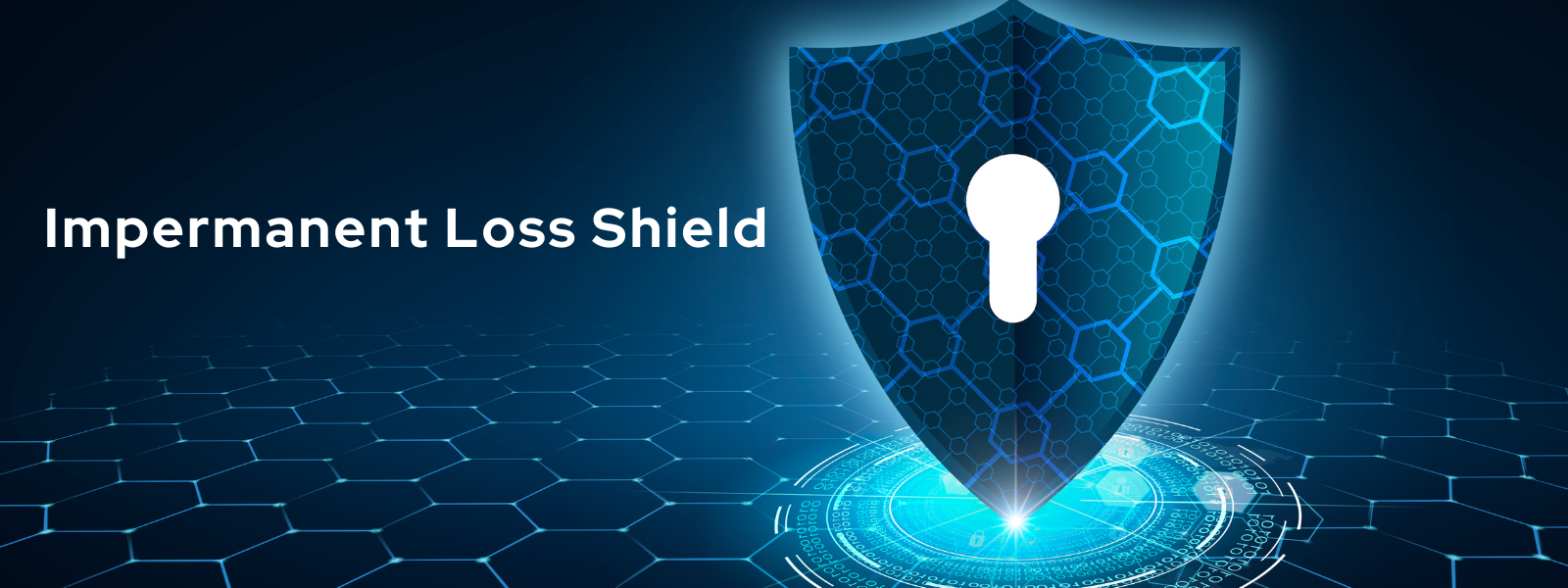Impermanent Loss Shield (ILS)

In short, an impermanent loss occurs when one of your assets appreciates or depreciates relative to the other asset. This opens an arbitrary opportunity for others to profit from because they are incentivized to equalize the pools. You will always benefit from providing liquidity through your portfolio rather than just hoarding token assets in your wallet with Impermanent Loss Shield.
Impermanent Loss Shield is paid out when you withdraw your deposit from the liquidity pool. As long as the impermanent loss exceeds the revenue you earn from providing liquidity (through fees and incentives), you will receive a subsidy for the difference. In the case of an impermanent loss, for example, your protection will be subsidised by the revenue generated from fees and incentives. If it doesn’t then Lyfebloc will subsidise your Impermanent Loss. Impermanent Loss Shield does not protect you from both assets depreciating. This is loss, as this would occur if you were just holding the assets regardless. Liquidity Providers will receive linear Impermanent Loss Shield over the course of 100 days. Essentially this means you are receiving an additional 1% protection for every day that you provide liquidity.
49 days provided = 49% Impermanent Loss Shield, 100 days = 100% Impermanent Loss Shield. After 100 days+, your pool will be fully protected until you withdraw from it! Lyfebloc believes that the revenue from our liquidity pools will consistently exceed impermanent loss so it will be rare for Lyfebloc to subsidise your loss as the pools will generate enough revenue to cover it. All deposits will be covered as if they are symmetrical deposits.
Impermanent Loss Shield is applied to the asymmetrical deposits after it has been re-balanced into a symmetrical deposit. Let say you have already provided liquidity, if you top up your liquidity pool with an additional deposit it would reset your overall Impermanent Loss Shield to the date of the new deposit. The Impermanent Loss Shield will be tracked from the most recent deposit and every time you add a new deposit the days of Impermanent Loss Shield will restart for your whole pool.
So in order to get 100% Impermanent Loss Shield, you will have to wait 100 days from your most recent deposit.
If your deposit transaction takes a while to process, AKA if the chain of the asset you are providing (such as BTC or ETH) is congested, you may suffer Impermanent Loss whilst your asset transaction is pending. This is because the deposit can only be protected when it has been confirmed and added to the pool. This also applies for pending liquidity pools that have not been granted as an active pool, as your assets are in a pending pool that is “inactive”. In the case of Partial withdraws — i.e. taking out a percentage (but not all) of your pool. This will not reset the Impermanent Loss Shield of your pool.